A few months ago I was welcomed home by a rather strange envelope from the Royal Academy of Arts. I wondered what it could be. Turns out I was invited to the buyer’s viewing of the 245th annual Summer Exhibition at the Royal Academy. Having never been formally invited to such events, I was feeling rather ecstatic.
Own photograph.
After seeing several other exhibitions on the day, I eventually made my way to the institution. I was immediately faced with three sculptures in the Annenberg Courtyard, the most striking of which was El Anatsui’s TSIATSIA – Searching for Connection which hangs in front of the façade of the building. The ‘wall-hanging’ sculpture, constructed from found metallic objects – primarily aluminium – is the artist’s largest work yet, measuring 15m by 23m, and provides a lovely backdrop to the sculpture of Sir Joshua Reynolds. This work also won the artist the prestigious £25,000 Charles Wollaston Award, one of the most significant art prizes in the country. Sitting beneath this shimmering curtain are John Maine’s stone sculptures, Settlement (A Work in Three Parts) and Ukraine. Since a lot of people were sitting on them, I didn’t realise the former was a piece of art until I looked at the published list of works.
El Anatsui’s ‘wall-hanging’ sculpture in the background of John Maine’s granite works. Own photograph.
The opening room in the exhibition, known as the Wohl Central Hall, is dedicated entirely to sculpture. Echoing the octagonal form of the room is Sir Anthony Caro’s monumental steel Shadows. Hanging on one of the walls is an acrylic on plywood relief entitled Identical Shapes: Eight Rows by John Carter, which creates the illusion of angled panels against flat ones.
Exhibiting only the paintings and drawings of Royal Academicians and Honorary Royal Academicians, the Main Galleries is filled with a variety of styles. A classic favourite of mine is Diana Armfield’s Impressionist paintings of landscapes and still lifes. Bill Jacklin’s dreamy urban settings are also particularly admirable. Vague paintings evoking large postcards inserted into envelopes by Joe Tilson are scattered around the room while Anthony Whishaw exhibits a Cubist-style Flying Above. However, annoyingly hidden in a corner of the room are the works of the late Mary Fedden, who passed away last year. Her flat, yet multi-perspectival still lifes, reminiscent of Cezanne, will be exhibited in the annual exhibition for the last time.
Strangely, for a RA/HRA-dedicated room, the incredible panoramic pencil drawing, entitled Everything Meets Here, by the non-RA Jessie Brennan was also exhibited here. It depicts a scale-reversed city where ordinary stationery materials tower over human citizens like skyscrapers. The feature painting of the room is a rather dull Tate Moss by Jock McFadyen, depicting an abandoned building where a bright blue double-door sticks out like a sore thumb against the murkiness of the building and its surroundings. A childish-looking Lorry Art by non-RA Rose Wylie hangs on the wall directly opposite this work. However, there was a really nice painted mosaic by Tom Phillips entitled From the Arabian Nights, while a wonderful Snowflakes by Terry Setch hides amongst the crowds.
Ewan David Eason, Gold Mappa Mundi London. Image via www.mapart.me.
The next two rooms are dedicated to the process of printmaking. Tightly adorning the walls are a supposed “myriad of differing styles, textures, colours and concerns.” Adam Dant’s ink and watercolour Venice (Mouth of Italy) forms the centrepiece of one of the walls, while a screenprint with gold leaf by Ewan David Eason hangs in a corner, entitled Gold Mappa Mundi London. There are Tracey Emins and a rather intriguing Art History Chart by Nelly Dimitranova, based upon a domestic colour chart. I was very glad to see the work of Nana Shiomi again since my first ever Summer Exhibition viewing in 2009. Anne Desmet, who hung the first of these rooms, also exhibits several wood engravings based on the London Olympics and, needless to say, she decided that Chris Orr should feature here too.
The second of these two rooms was hung by Peter Freeth, who decided to occupy most of it with monotones and woodcuts, forcing the viewer to examine the details of each print. I was rather drawn to Mychael Barratt’s Life Imitating Art X, an etching and aquatint that is set in a life drawing session, where the central figure is a model in a pose reminiscent of The Toilet of Venus by Velázquez. Nude not Naked by Brad Faine was a lovely justification for the prominence of nudes across the whole of art history, essentially appropriating many works of art and collaging them into a grid. Since ‘proper’ summer is approaching, it is probably appropriate to highlight a cute relief print of a child with a bucket by Sharon Low, entitled Summer Holidays. Paul Coldwell and Michael Craig-Martin also exhibit in this room.
However, both rooms also contain several sculptures. Probably the most comedic – or just simply adorable – is Tim Lewis’ Mule Make Mule, exhibited in Anne Desmet’s room, which will start to draw itself as you continue to turn the handle on the side. In the other, ostrich feathers dandle from a life-sized floating acrylic sculpture of a man, entitled Dreamcatcher by Marilène Oliver.
Ron Arad, Blame the Tools. Image via www.ft.com.
As usual, the Large Weston room felt a bit empty. The artworks were often concentrated in one area of each wall, usually the middle, giving a sense of incompleteness. The sculptures were few, and would have hardly covered half of the floor space in the room. In other words, the room was just too big. The most distinct piece is Ron Arad’s Blame the Tools, a stainless steel fabrication of a Fiat 500, while a squished head places itself at the other end of the room, facing a rather stylistic wooden chair. The Small Weston Room wasn’t that much better.
The walls were more or less half-filled: a large abstract painting by C. Morey De Morand took up the back wall, while no less than two small paintings occupied the corners, one of which was a rather beautiful portrait of a Sioux warrior. Fortunately, I had a personal saving grace for this room – just out of sheer coincidence. Referring to a nearby painting, a woman close by asked her boyfriend: “You know what is underused in art? Glitter.” I couldn’t agree more.
After a brief trek through the previous rooms, a large owl sculpture welcomes us, entitled Inebriate Owl by Ivor Abrahams. A first-time print submission called Melancolia by Anselm Kiefer also hangs in the centre of one of the walls, accommodated by a sculpture of a shirt close by. I rather liked the isometric drawings of Adrian Kidwell, both of which reminded me of the impossible constructions of M. C. Escher. Jessica Arevalo’s One Minute was particularly interesting, rendered in pencil, the series of tidal movements hinted at the sequence photographs of Ansel Adams.
The next three rooms were rather strange and I wasn’t exactly a fan of it. Hung by John Wragg, in collaboration with Eva Jiricna – who is in charge of the Architecture Room – the rooms make an attempt to merge and make a crossover between sculpture and architecture. Personally, I quite liked the concept; I just didn’t like the delivery. I felt that it resulted in a decrease in the number of works exhibited, becoming much less impressive than it could have been, especially with the Architecture Room.
The Architecture Room. Image via www.cassart.co.uk.
Luckily there were enough stimuli to keep me from being more disappointed. A beautifully, intricate Christswarm shimmers under the gallery’s lighting as gilded wasps converge upon a crucifix. Dae Hun Kwon’s silvery sculpture of a girl beside a postbox caught the eye of many passing visitors, while Biodiversity Nest at the Eden Project introduces us to the crossover between these three rooms. The Architecture Room was much less filled than it used to be – this is usually my favourite room – and the displays were a little messy too. Accompanying several architectural models like the Gretna Landmark Proposal by Chris Wilkinson and Chang-Yeoh Lee’s SYNTH[E]TECH[E]COLOGY would be a slightly out-of-place inkjet print by Michael Craig-Martin, depicting a chair by Theo Van Doesburg and Marcel Duchamp’s Fountain of 1917. One of the cheapest works also resided in this room: at £25, Nichelle Channer’s See Level, Dropwort Research Centre failed to beat Liam Ryan’s £15 Servant of the Moon woodcut from last year. My disappointment with the Architecture Room this year was just how very little architecture was exhibited. I still don’t see why they had to place Stephen Cox’s figurative, alabaster sculpture in this room – it just looked weird. A small Tracey Emin sculpture exhibits in the following room, contrasted by some rather quirky ‘pottery’ made of foam and pins by David Mach.
For the first time I’ve seen, an entire room has been dedicated to portraiture. A Chuck Close print hangs boldly in a corner as ME and ME by Marina Abramović stares intently at us, recalling her 2010 MoMA show The Artist is Present that brought tears to many of her visitors. Kate Moss makes an appearance in Allen Jones’ Kate Encased, while a speculative approach to the future of self-portraiture casts itself in bronze by Bill Woodrow, specifically the year 2087.
Marina Abramović, ME and ME. Image via www.royalacademy.org.uk.
A room devoted to photography follows next, something that has had mixed receptions since the beginning. As a room itself I quite liked it; in relation to the exhibition it was a poor curatorial choice. That isn’t to say that there weren’t some truly marvellous photographs. I was rather attracted to David Thurston’s Untitled: Xinjiang, China, a disquieting photograph of a young child smoking a cigarette, acting almost like a fully-grown man, without any regard for his own health. A giant ball of hair dangles itself from a white interior setting in the form of Megalomaniac by Petros Chrisostomou. I really liked Emily Allchurch’s Grand Tour: In Search of Soane, a somewhat haunting microcosm inside a grand interior. On a darker note, Eyrie by Suzanne Moxhay depicted a wasteland of fallen houses with crows perched like vultures waiting for their next unfortunate prey.
And then there’s the Lecture Room, an explosion of open submissions, hinted by the widespread form of Dame Zaha Hadid’s fibreglass, metallic sculpture that proudly occupies the floor. A bronze statue of Her Majesty the Queen stands boldly near a corner while Robert John Shaw’s London Cityscape, St Paul’s, Morning Sun reminds us of the beauty of the city. Chris Orr features again, this time with a watercolour entitled From Neo Bankside, selling for £10,000. Since my trip to Venice was approaching soon, I simply couldn’t resist Ken Howard’s Venetian cityscapes scattered around the room, depicting the Doge’s Palace and the surrounding St. Mark’s Square.
Finally, the last room in the exhibition felt the most out-of-place. Entirely out of convention, the Royal Academy decided to hold a mini exhibition, dedicated to Grayson Perry’s vivid tapestries from The Vanity of Small Differences series from 2012. Guess what? Perry, too, is a Royal Academician. Six mural-like pieces tell the story of a character called Tim Rakewell, exploring contemporary taste in Britain. Modern morals are mixed in with Old Master references to tell the rise and fall of this fictional character, inspired by William Hogarth’s A Rake’s Progress.
Grayson Perry, The Upper Class at Bay, 2012. Image via www.telegraph.co.uk.
Overall, I must say I was slightly bemused when I came out of the exhibition. For an open submission-reliant exhibition, there was a huge emphasis on Royal Academicians and Honorary Royal Academicians. The decision to categorise parts of the exhibition was messy and half-done. Several of the rooms were half-filled and some works didn’t really complement each other – seriously, who puts a torso sculpture amongst mini architectural models?! Lastly, the Grayson Perry mini exhibition at the end was just plain unconventional.
I don’t want to say it’s a bad exhibition; just a very strangely laid-out one. Some of the works really are quite marvellous, but they tend to be in small pockets. The choice is yours as to whether you’d risk the admission fee, but personally, this was a sore thumb in my five years of attending. Luckily, they were serving Pimm’s and other alcoholic beverages in the Main Galleries.
Own photograph.
Summer Exhibition 2013 runs until 18th August 2013 at the Royal Academy of Arts, www.royalacademy.org.uk.

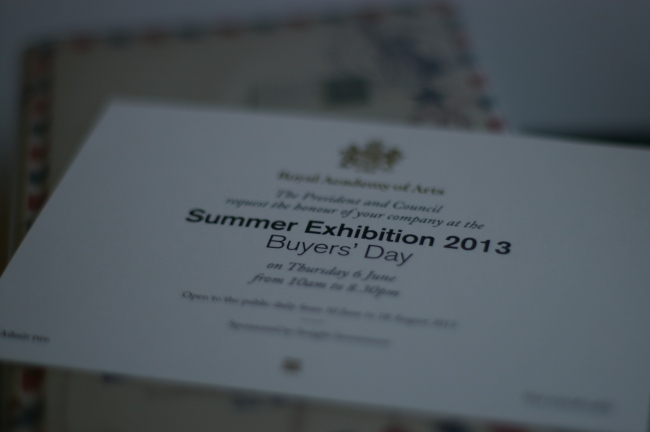
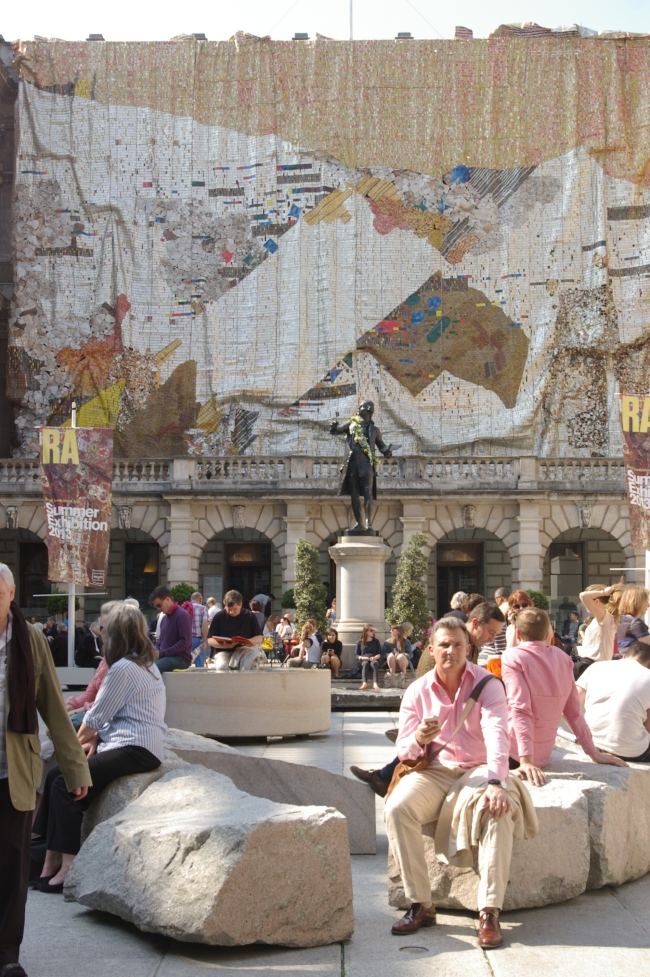
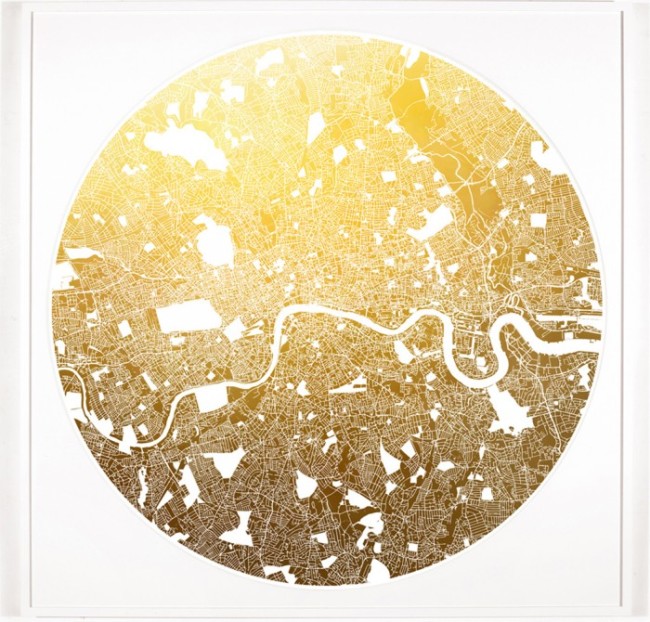
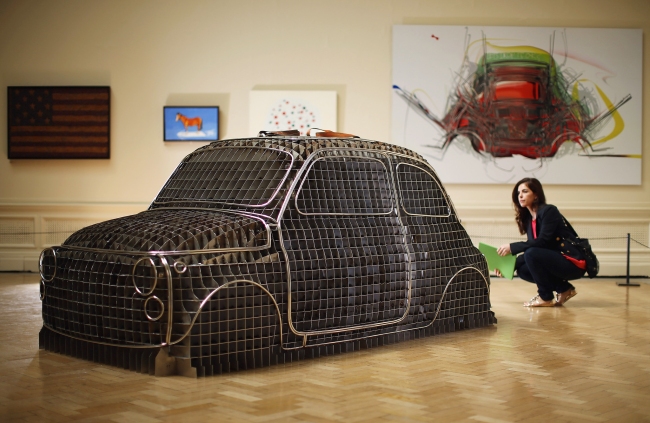
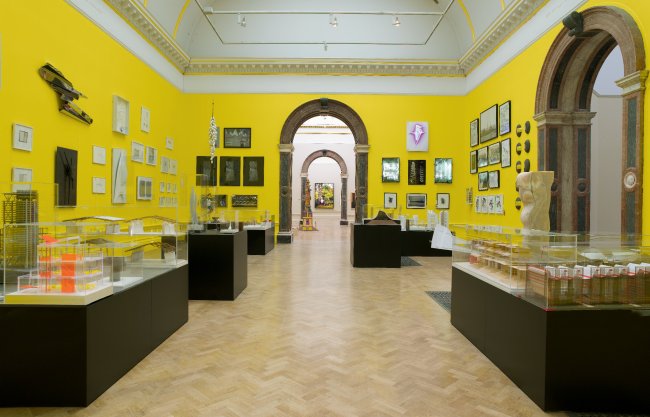
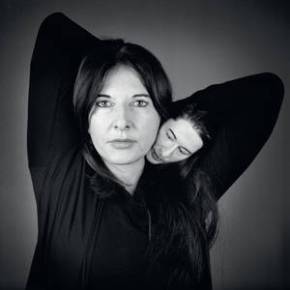
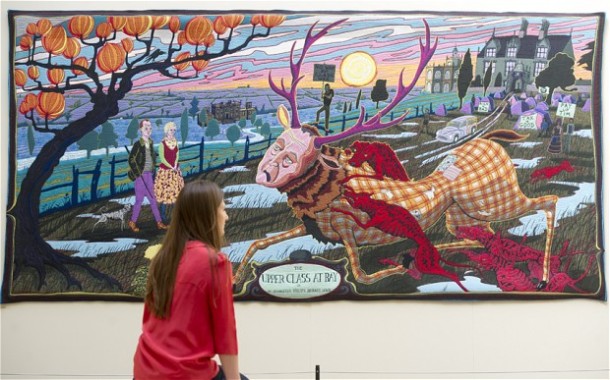
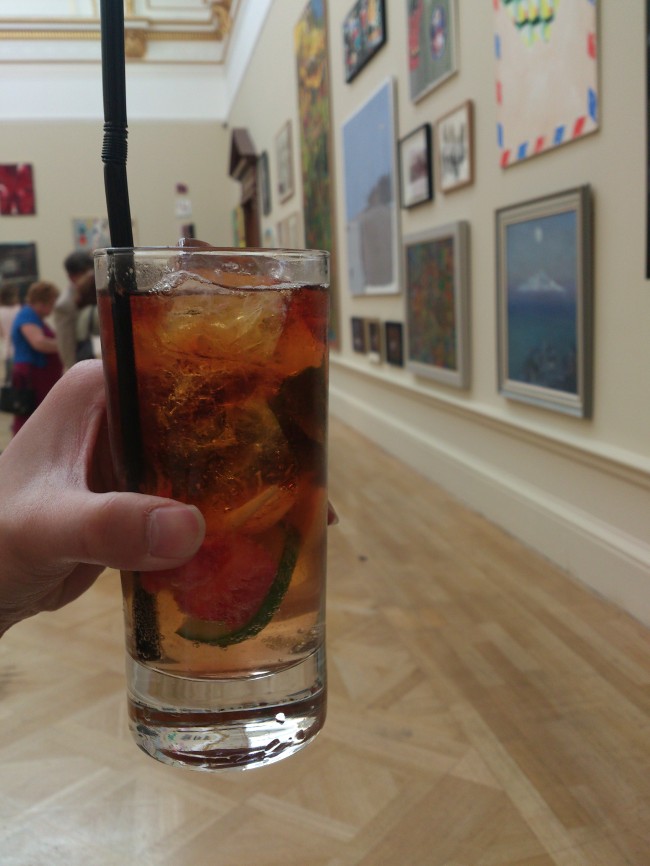

Leave a comment